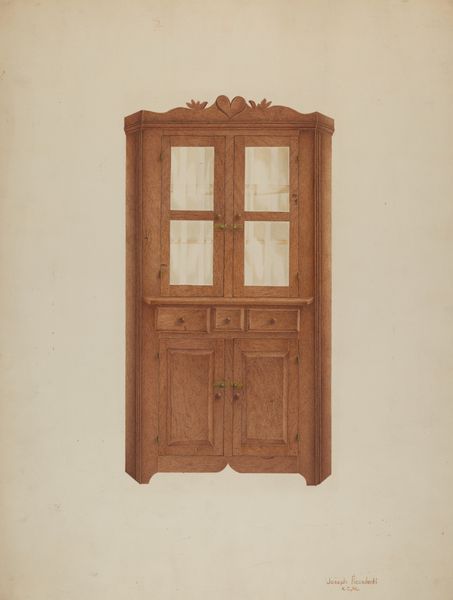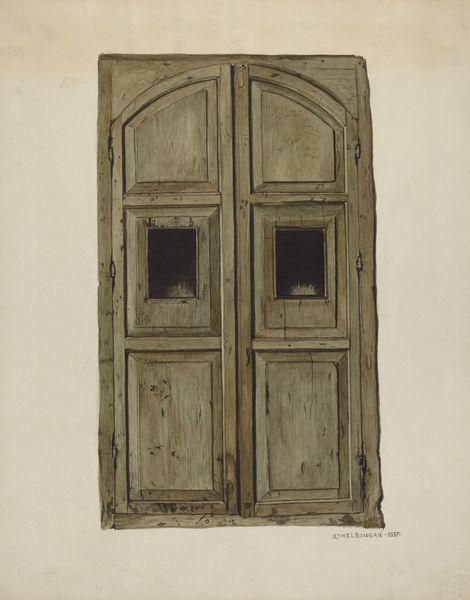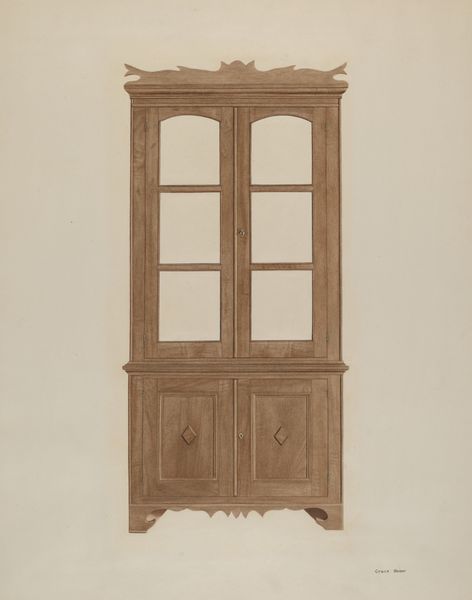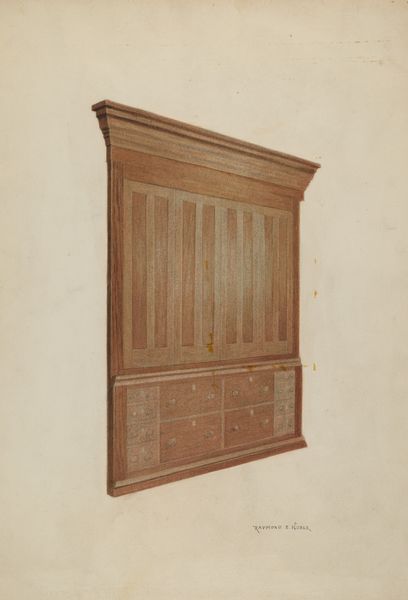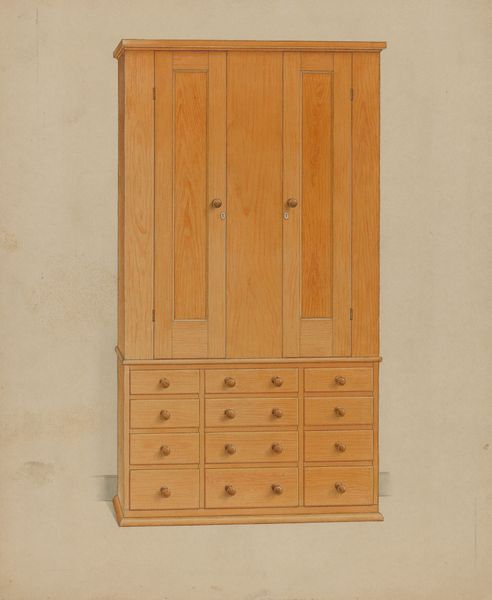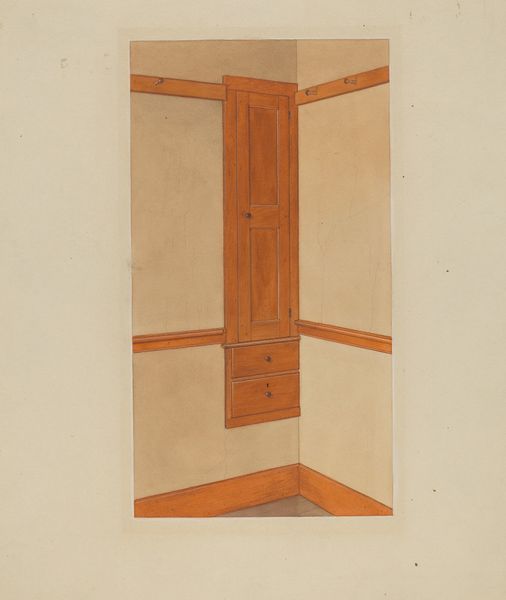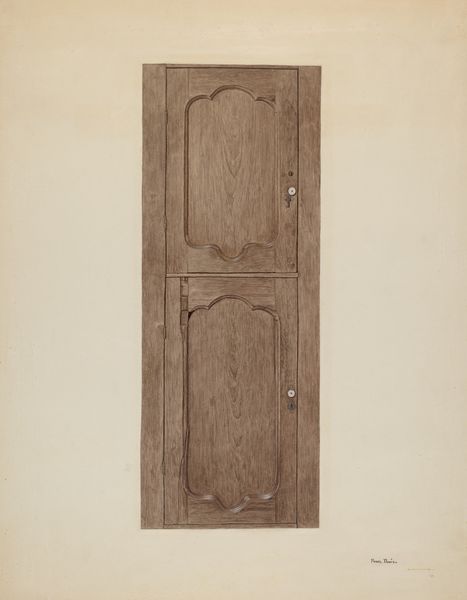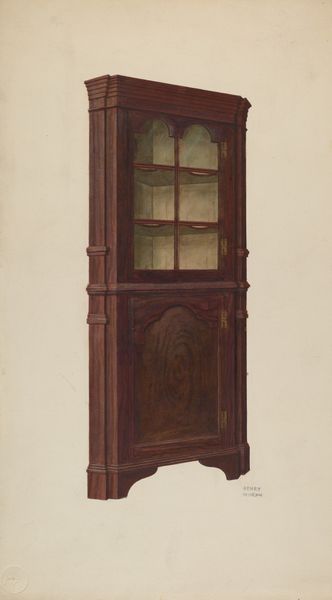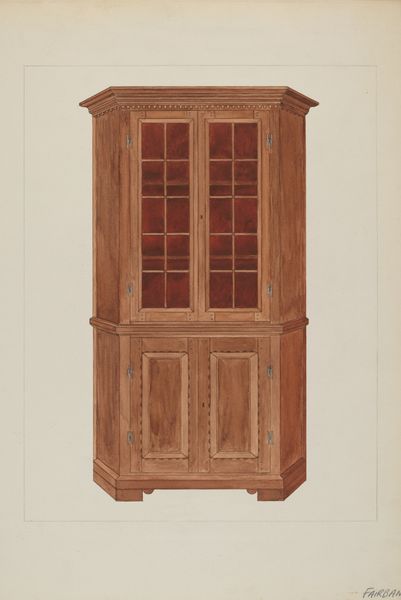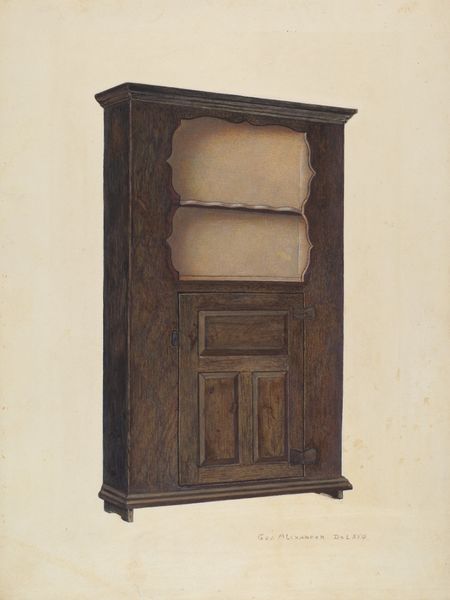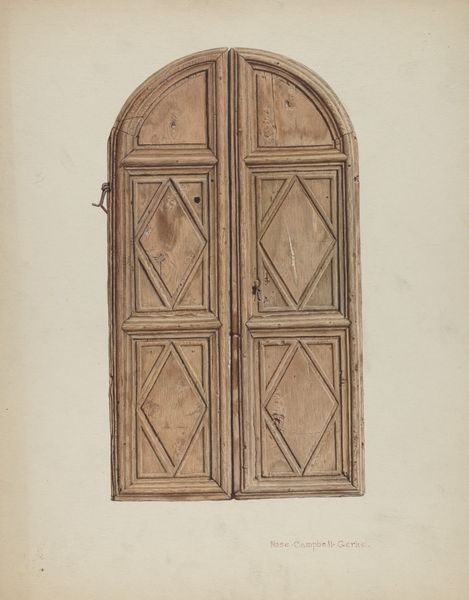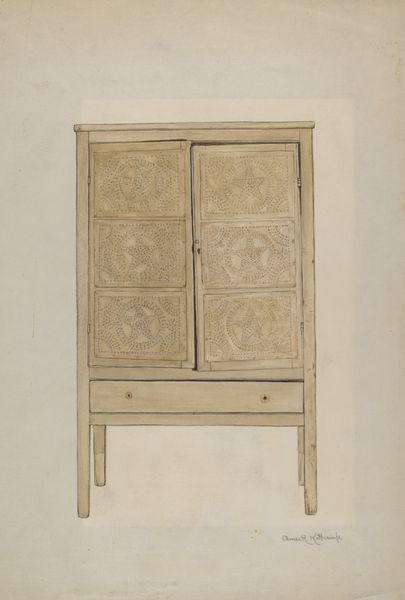
drawing, watercolor
#
drawing
#
watercolor
#
watercolor
#
realism
Dimensions: overall: 29.5 x 23.3 cm (11 5/8 x 9 3/16 in.) Original IAD Object: 92"high; 48"wide at front. Sides 5"wide
Copyright: National Gallery of Art: CC0 1.0
Editor: This watercolor drawing, "Corner Cupboard," was created by Edward A. Darby sometime between 1935 and 1942. It feels very… grounded, in a way. What social commentary do you see in this domestic object being rendered with such care? Curator: Well, Darby's focus on such a functional object during the late Depression era highlights the importance of home and stability during a time of economic hardship. Consider, also, the institutional context: Darby worked for the Index of American Design, a WPA project. These images served a purpose. Editor: A WPA project...so its public role was to document, essentially? To create an archive? Curator: Exactly. But it's more than just documentation. These images helped to promote regional craftsmanship and to reinforce the value of American material culture during a period of national identity formation. Does this shift how you see the piece now? Editor: It does! So, the level of detail isn't just aesthetic; it's about legitimizing this "common" object, making it worthy of study and preservation by the government. Were these images intended to influence contemporary design trends at all? Curator: That’s a compelling thought. The Index served as a visual resource for designers and artisans seeking inspiration in historical forms, although direct evidence is scarce. How might the display context, perhaps in a school or library, shaped public perception? Editor: That's interesting...seeing it as something that isn't just beautiful, but representative of broader cultural narratives about American identity during the 1930s and 40s makes it a lot more interesting! Curator: Precisely. We are compelled to reflect how power intersects even the most mundane aspects of our everyday lives and how something seemingly trivial is not as apolitical as it looks.
Comments
No comments
Be the first to comment and join the conversation on the ultimate creative platform.
